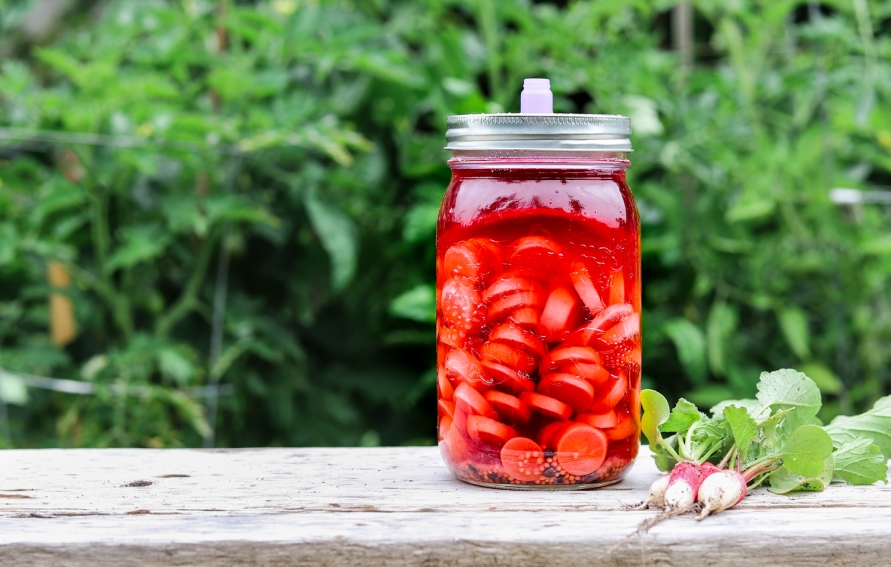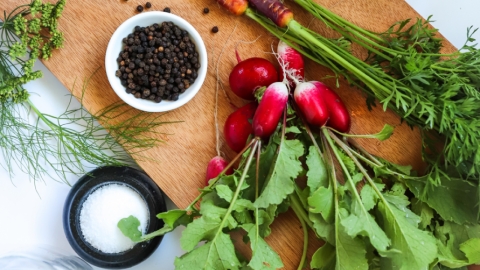Instructions
INGREDIENTS
3 Tbsp sea salt
6 cups filtered water (or boiled 20 minutes to remove chlorine if using city water)
6 cups radishes, washed and cut crosswise into ¼-inch rounds
2 Tbsp peppercorns
1 tsp red pepper flakes
2 one-quart, wide mouth mason jars (sterilize with boiling water before using)
Optional: airlock lids or pickle pipe tops for mason jars, glass fermenting weights
METHOD
Dissolve sea salt in the water to make a brine.
Place peppercorns and red pepper flakes in the bottom of each quart jar. Add sliced radishes on top of the spices and pack them in as evenly as possible, leaving slightly more than an inch of headspace at the top of the jar.
Pour brine over vegetables, leaving one inch of headspace (you may have some brine leftover). Top with fermenting weight to keep radishes submerged. If you don’t have a fermenting weight or something similar, fill a small plastic bag with about ½ cup of water, seal and put on top of radishes.
Close jar with airlock or pickle pipe and fasten gently with jar ring. If you don’t have the special lids, put regular canning jar lids on and undo it once or twice a day to release gases (burping the jar) or use a coffee filter secured on top. Leave to ferment at room temperature 5–10 days. They will likely turn cloudy as they start fermenting and small bubbles will occasionally rise.
Once the initial fermentation period is over (it is over when you decide you like how they taste), they are ready to enjoy. Top with a regular canning lid and move the jar to cold storage if not storing in your fridge to eat right away. These will last 3–6 months if stored properly (harder vegetables tend to last longer than softer vegetables).
Things to watch out for (though not common if proper sanitation and submersion are followed) are mold, pink fuzz or a rotten smell (the good fermenting smell should remind you of sourdough bread or a brewery). If any of these things occur, it is best to toss the batch and start over.





